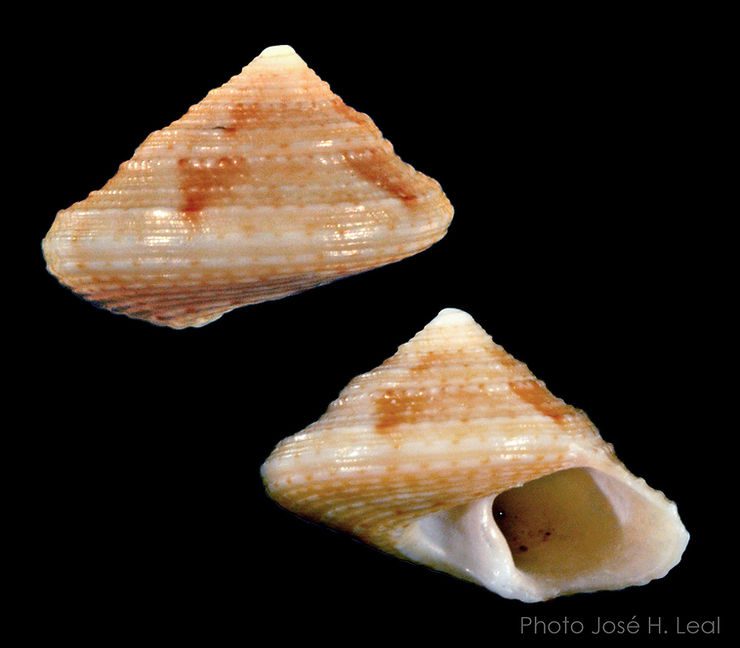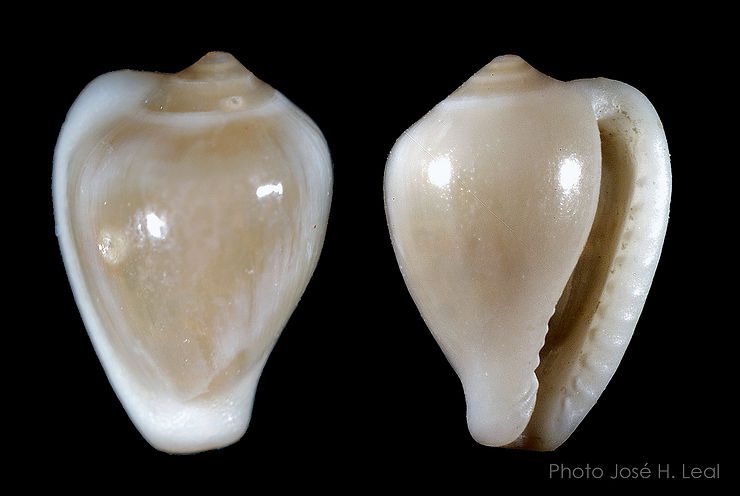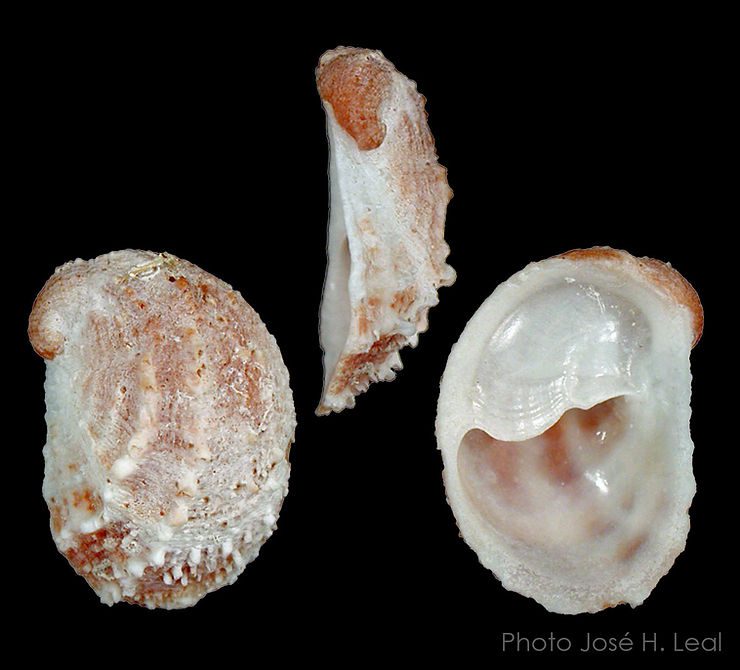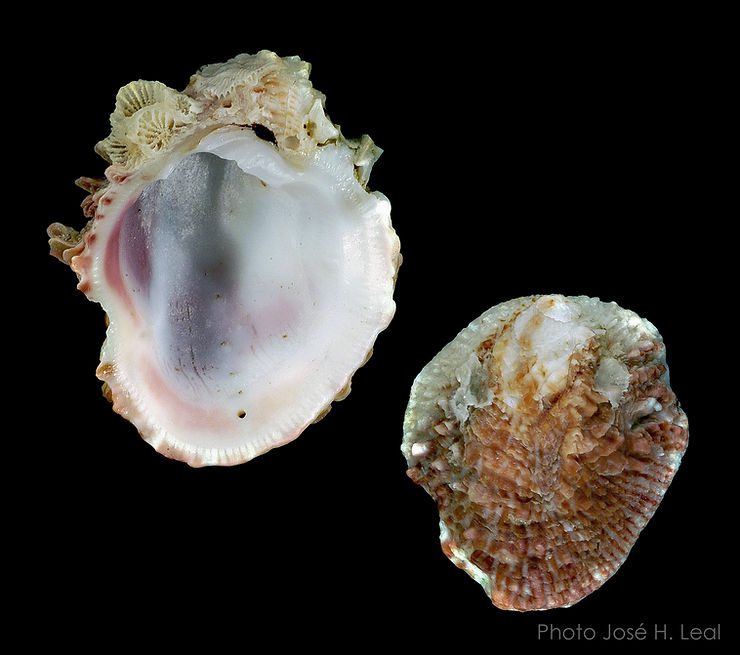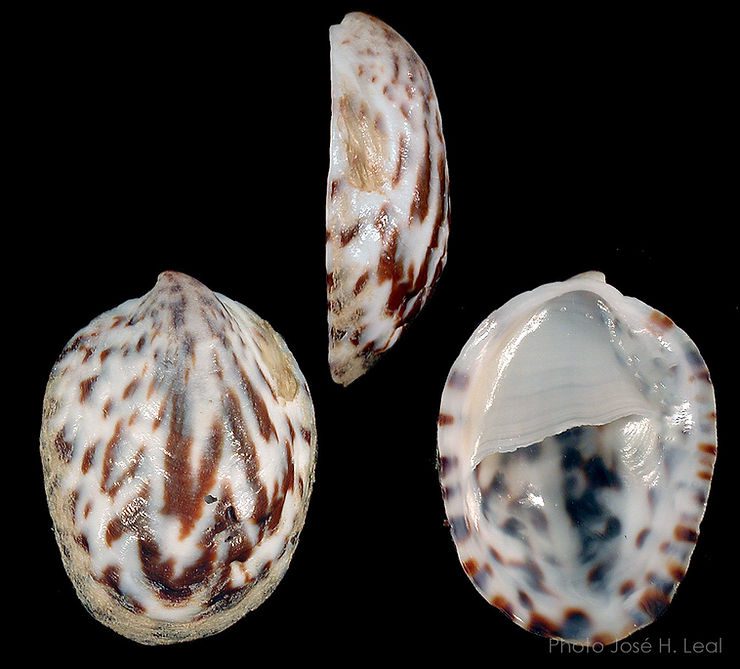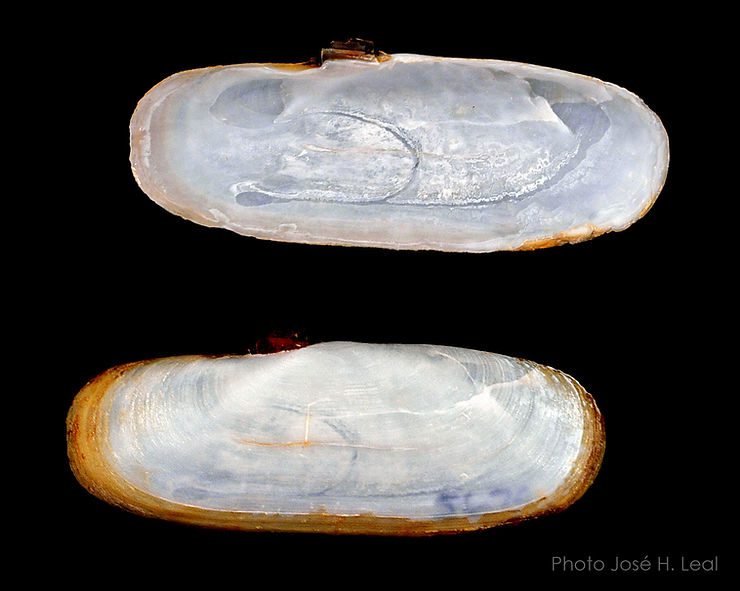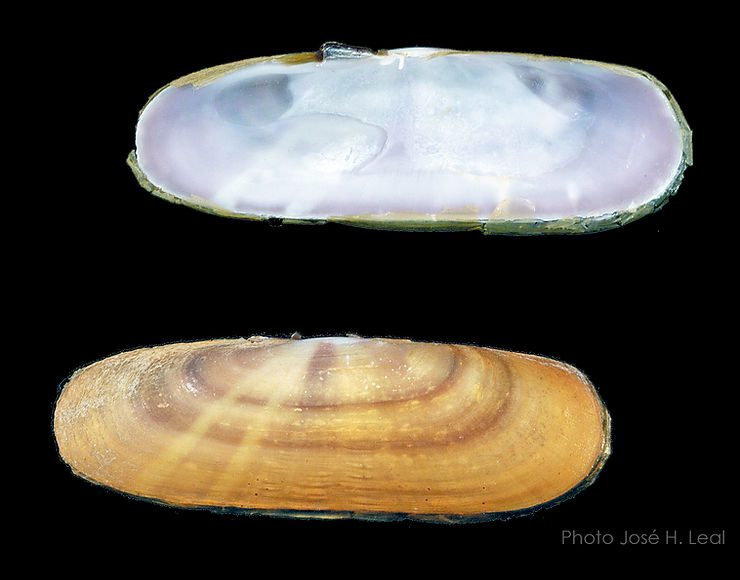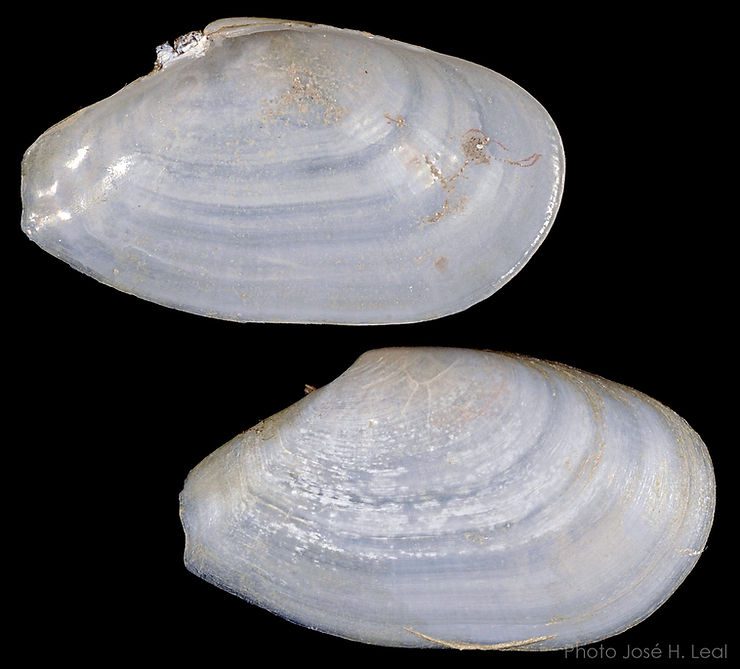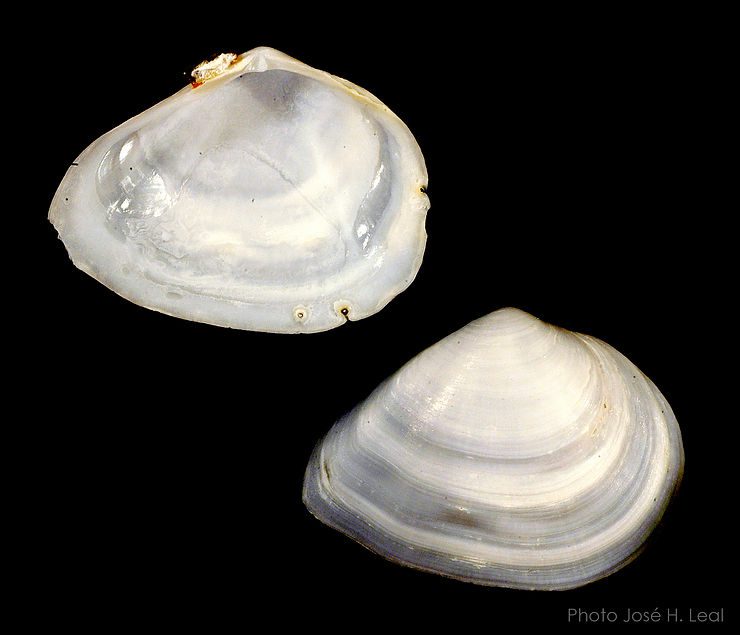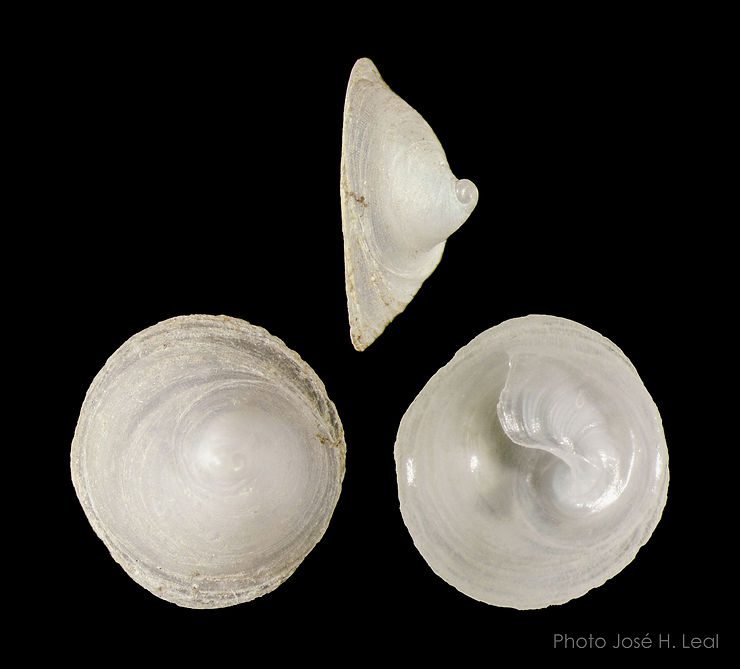
The Circular Chinese Hat
The Circular Chinese Hat, Calyptraea centralis (Conrad, 1841) is the least common among the local species of the Slipper Snail family Calyptraeidae. Its circular shell reaches about 0.5 in diameter; the apex on "top" of the shell is centrally located, and the shell "aperture" is represented by a sinuous (sigmoid), flaring shelf "under" the shell. The shell color is white or off-white, sometimes slightly translucent. As other members of the family, Circular Chinese Hats are filter-feeding marine
